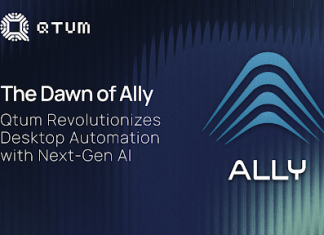In 2025, many consumers find themselves using more than one digital wallet or financial app to manage their finances, complicating the daily experience.
This choice arises mainly from functional shortcomings, reliability issues, and the desire for better deals. In this article, we analyze why the multiple use of financial apps is the new normal, highlighting the causes, frustrations, and future prospects of the sector.
Functional shortcomings in the main digital wallet
A good 60% of users report gaps in the features offered by their main digital wallet. In particular, the lack of tools for budgeting and the integration of services are among the most recurring reasons.
The lack of complete solutions drives many to install a second app specialized in specific functions, such as expense analysis or savings control.
In addition to functional shortcomings, 58% of respondents use additional apps to take advantage of cashback programs or better rewards. About a third look for apps with lower fees or more favorable exchange rates.
Trust remains a key factor: 17% of users consider reputation and reliability an important reason to maintain more apps, adopting an “insurance” approach in case of issues with the main one.
The evaluation of over 50,000 user reviews revealed that 54% highlight support difficulties, such as long times to resolve issues or account blocks.
These technical issues lead many to have a secondary app ready for use, to avoid blocks in transactions or difficulties accessing funds.
The data shows that 47% of users use financial apps daily, while 41% use them multiple times a week. Only 1% resort to these apps monthly.
Regarding the number of apps, 54% use several for different financial purposes, 41% mix specialized and all-in-one apps, while only 4% rely on a single app.
Users with greater technological expertise, defined as Advanced Tech Users (39.2%), are the most satisfied. 85% of them report a high degree of satisfaction with a single app.
On the contrary, users with intermediate or basic skills more often resort to multiple solutions to compensate for missing features or difficulties in use.
The most requested features and the gaps to fill
Budgeting is the most felt shortage: over 52% of consumers complain about the lack of effective tools for budget management in their main app.
This phenomenon leads many to download apps dedicated to expense tracking, given that good budget control is essential for effectively managing personal finances.
Security represents a fundamental piece: more than 45% of users report the need for improvements in this area.
In the same way, the integration of features – such as direct links between different apps or included banking services – appears lacking. Especially for those who use digital wallets for daily expenses, these two functions are a priority.
The reviews also highlight operational issues: almost 39% of users complain about difficulties in customer support, account freezes, and bureaucratic complications.
To all this are added frustrations related to functions that are not intuitive or missing, such as the management of outdoor activities or international operations.
An interesting fact concerns the ability of users to remember where they have stored key information. Among those who use three or more apps, 80% occasionally report difficulties in finding important data, while 17% admit to often getting confused.
This demonstrates how the high number of apps not only complicates financial management but also negatively affects mental clarity in money administration.
A crucial question is whether users would be willing to reduce the number of apps. The answer is very clear: 91% would prefer to use a single app that encompasses all necessary functions, without additional costs.
Only 2% want to keep more apps by personal choice. This data highlights how multiple usage is mostly a compromise solution, dictated by the absence of a complete offer.
Meeting advanced technological needs
The Advanced Tech Users look for advanced features, such as synchronization between multiple platforms, robust security tools, and a complex budgeting experience.
The successful financial apps of the near future will therefore need to integrate these needs to build loyalty among more experienced customers and reduce fragmentation.
For users with basic skills, simplicity and security remain priorities. Offering intuitive interfaces, effective support, and essential features can enhance their satisfaction and, consequently, the propensity for exclusive use of a main digital wallet.
The spread of more digital wallets reflects a market that is still fragmented and evolving.
Users find themselves forced to manage a multitude of apps due to offerings not always aligned with their needs, particularly in terms of security, budgeting, and service integration. However, the desire to switch to a single and comprehensive solution is clear and widespread.
Financial apps must therefore innovate to offer a smooth, secure, and comprehensive experience. Only in this way will they be able to overcome the “multitasking fatigue” and consolidate a base of more satisfied and loyal users.
The future of the mobile financial experience will likely be marked by the union of advanced technologies and attention to individual needs, reducing the necessity to manage a thousand different tools.
Those who wish to optimize their financial management should evaluate the apps not only based on the functions offered today, but also on their ability to evolve and ensure security and constant support.
In the meantime, understanding why consumers use more digital wallets helps developers and institutions to better guide investments and product strategies.









